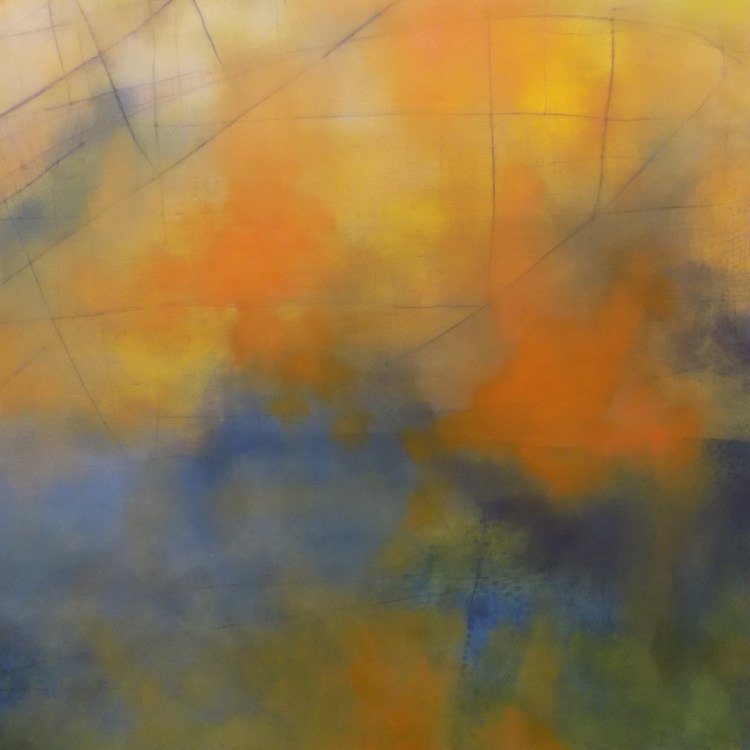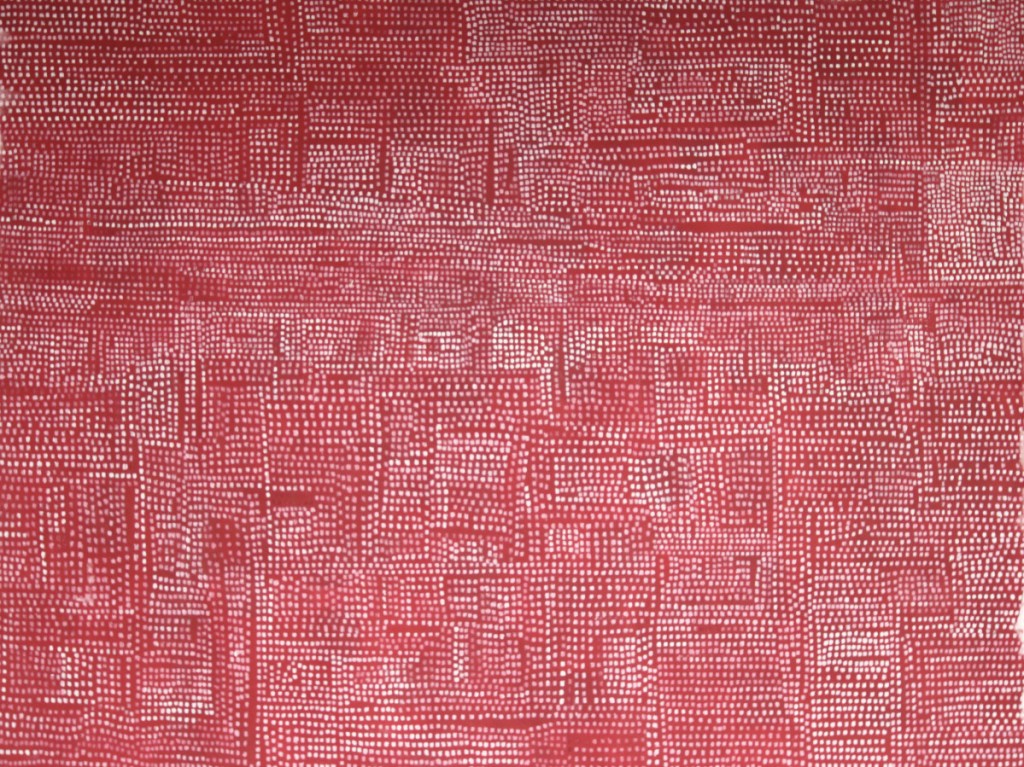Has our culture shifted under Trump, or just the way we talk about it? Would it be better to say our culture has shifted because we have changed how we talk about it? I am inclined to the latter (my answer to the first question is “both”) because I believe that the framework of any culture is the way we talk and think about it.
The word “discourse” might come across like an academic albatross, but it is built on this very set of ideas. Discourse is the set of words and terms that matter to any given topic. It is how culture functions. It is how we can share ideas, language, values, concerns and subjects. And it isn’t just shared space, but often the fork in the road – the starting point of difference and, therefore, conflict. Dialogue is related, but it is hardly the same thing. Dialogue is two-way communication. That requires a shared language, a shared subject and a sense of turn-taking.
“Day Trip” is a two-person show at Frank Brockman in Brunswick. It’s particularly satisfying because we’ve rather lost our sense of two-person shows. While we were once used to the idea of art movements and manifestoed groups, that model was displaced by the postwar American myth of finding a recognizable schtick an artist can brand as his or her own and running with it. In “Day Trip,” we see Michel Droge and Marci Spier carry on a genuine artistic dialogue.
Droge, who teaches at the Maine College of Art, is a sophisticated and accomplished painter whose most recent bodies of work have centered around soft but colorful atmospheric abstractions. Within these beautifully executed works are what look like tiny pencil scribbles. And these are generally small, rare and vague enough that they don’t offer any sense of underlying structure or figuration. The images give the sense that you are lying on your back looking up at the smoke from a great fireworks display that is out of your field of vision.
Droge has works like this in the show, and they are no less gorgeous than ever. “The Memory of Trees” is a large square panel with black clouds under atmospheric grays, lit from within by flashes of white and vermilion. “Without a Compass” is a vertical panel (Droge works on panel in oil and doesn’t go light on the varnish) with soft clouds of blue, white and yellow. My guess is it’s the oldest work in show. The reason is that, with the newest works, Droge moves towards adding structures, rhythms and even forms. “From Where I Stand” is the clunkiest of these, but it acts like a sketch, so it’s the easiest to unpack. Two yellow lozenge forms lay belly to belly upon each other, tethered by a line that runs through the point of contact and a bit of scribble that knots them together. It sounds (and even looks) like a simple gesture, but the sense of binding is personally powerful.
“Water Over the Bridge” is a fully blossomed work in Droge’s new structured mode. The atmospheric sense is no less developed, but within, below and among the atmospheric colors are grids that shift and flow no less than the colors. While they flow easily and naturally, this is an extraordinarily rare sense of line within abstract painting. It is light, quick and dynamic and yet insists on a sense of system.
Droge’s sense of system is buoyed by Spier’s paintings, largely monochromes with varying grids of painted marks. “Choice / No Choice” is a large red canvas covered with grids of varying white squares (more than 100,000). It is an excited painting, seemingly so simple yet profoundly dynamic and visually complex. We get lost in the rhythms, shapes and differing systems, which make me think of the classical fresco painters’ notion of “giornata,” the area of plaster laid out that the painter could complete in a day (you can see these seams in, for example, the Sistine Chapel). Yet one of the most fascinating aspects of this painting is one I think most viewers will miss: The surface is red and the squares are white, yet they are darkened in places by mixing red into the white. We generally don’t see red mixed with white as “light red”; we see it as pink. But within a red system and a white system, we hold onto the systems logic and never feel this work has anything like a pink aspect to it. So, whereas Droge can soften lines with atmosphere, Spier can actually take atmosphere out of color – if she wants.

“The Memory of Trees,” by Michel Droge, oil on panel, 60 by 60 inches.
And yet their work is more about dynamism, energy and visual – rather than physical – experience. Both Spier and Droge avoid describable objects in favor of system, rhythm, atmosphere and flow.
While Spier’s most complete work might be the impressively large horizontal (and almost electric) “Looking for Today’s Lily,” I was most impressed by her “Good Morning,” a white field (that shifts to blue) thickly painted and layered with series of blue or green rectangles that intensify and fade away. It’s smart and playful.
While “Remembering Tomorrow” is probably the most complete statement in Droge’s new mode that combines grids and atmospheric logic, I am still most drawn to “Witness,” which might be described as the elegant conclusion to Droge’s purely atmospheric series. This is one of those paintings in which Droge includes a few seemingly meaningless scribbles, but here one centers at the bottom of the image, while another is centered above it – directly implicating the viewer’s body by means of bilateral symmetry. I think it’s one of the most beautiful paintings I have ever seen by a Maine painter.
Droge’s systems sensibilities are driven by an interest in ancient navigational systems like star charts and Polynesian stick charts. It’s a fascinating approach to work, particularly in terms of dynamism. Spier’s work as well has to do with energy, labor, moving and repetition as progress. These modes engage each other aesthetically, and they enrich each other. I frankly don’t know that it matters to learn that Droge is inspired by stick charts, for example; learning that certainly didn’t change my response to the work. But many viewers are more engaged with artists’ intentions than I am. I think content is more about what is conveyed than what motivated an artist to make a work in the first place. But when these things come together and make each other better, deeper, richer and more appealing – when art creates dialogue among artists, works and viewers – well, that’s the best of all worlds.
Freelance writer Daniel Kany is an art historian who lives in Cumberland. He can be contacted at:
dankany@gmail.com
Send questions/comments to the editors.




Comments are no longer available on this story